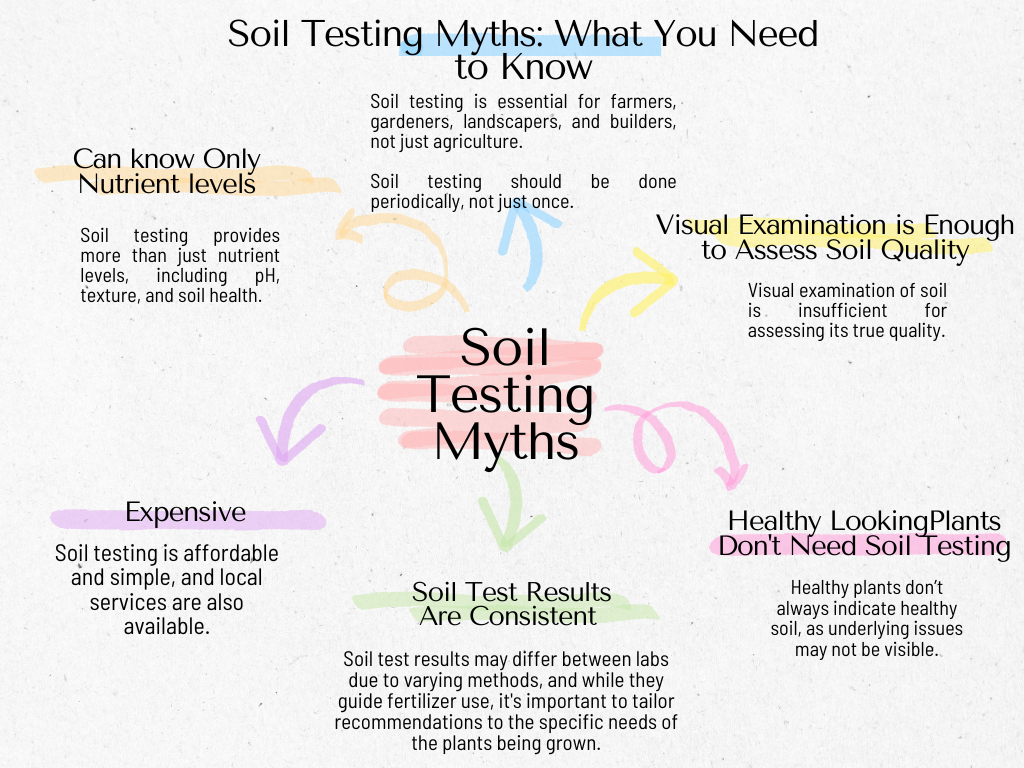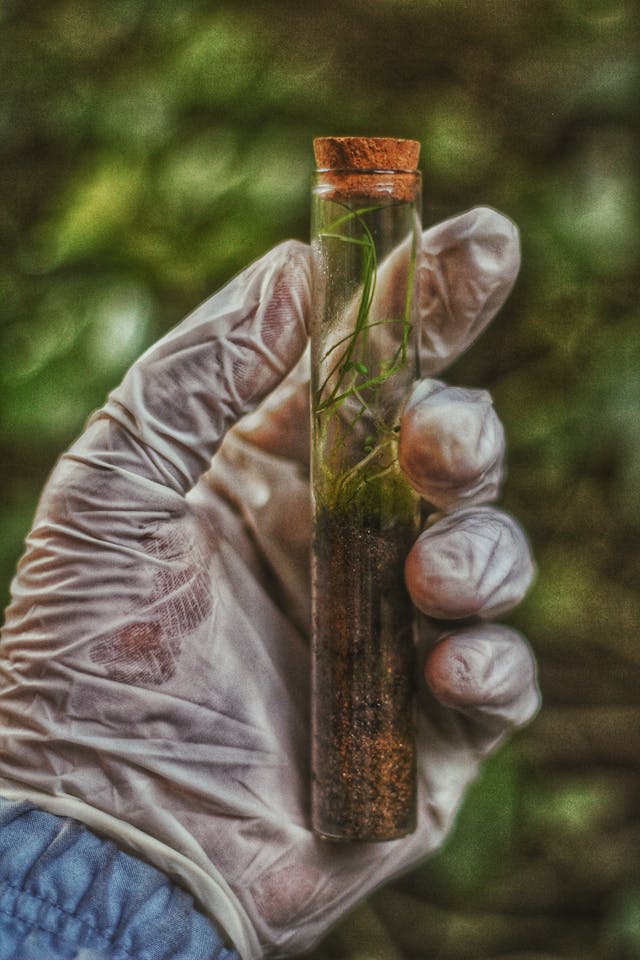Soil analysis is a crucial process for anyone engaged in farming, gardening, landscaping, or building projects. It offers valuable insights into soil health, nutrient content, and overall suitability for different purposes, from growing crops to building foundations. However, several myths and misunderstandings about soil testing can create confusion and prevent people from using it effectively. In this article, we’ll address some common myths about soil testing and explain why it’s crucial to dispel these misconceptions.
What is Soil Testing?
Soil testing is the process of collecting soil samples and analyzing them in a laboratory to determine various factors like pH levels, nutrient content, texture, and contaminants. For farmers, soil testing provides the necessary information to optimize crop yield by ensuring that the soil has the right nutrient balance. For landscapers and gardeners, it ensures that plants receive the proper nutrients for healthy growth. In construction, soil testing helps determine if the ground is strong and appropriate for supporting buildings.
Soil Testing Myth #1: Soil Testing is Only for Farmers
One of the most common misconceptions about soil testing is that it is only relevant for large-scale farmers or those involved in agriculture. While soil testing is indeed essential in farming to maximize crop productivity, it’s equally important for homeowners, gardeners, landscapers, and builders.
For homeowners and gardeners, soil testing is a key tool for improving the health of lawns, flowers, and vegetable gardens. Testing helps identify nutrient deficiencies and correct pH imbalances, enabling gardeners to make better decisions about fertilizers and amendments. Similarly, for construction professionals, soil testing is critical in determining whether the ground can support a building’s weight or if additional steps are needed to stabilize the soil.
Soil Testing Myth #2: You Only Need to Test Your Soil Once
Another widespread myth is that soil testing is a one-time task. While an initial soil test can provide a snapshot of soil conditions, it is essential to test your soil periodically, especially in agricultural and gardening settings.
Soil conditions change over time due to factors like crop rotation, rainfall, irrigation, and fertilization practices. For instance, certain nutrients may become depleted, or soil pH may shift, affecting plant growth. For optimal soil health, testing should be done at least every couple of years or more frequently if there are noticeable issues like stunted plant growth or poor yields.
Soil Testing Myth #3: Soil Testing Only Measures Nutrient Levels
A common belief is that soil testing only focuses on measuring nutrient levels, such as nitrogen, phosphorus, and potassium. While soil nutrient analysis is a significant part of testing, it provides much more detailed information about your soil’s overall health.
Soil testing also measures the pH level, which is critical because different plants thrive in specific pH ranges. For instance, some plants prefer acidic soils, while others do better in alkaline conditions. Additionally, soil testing provides insights into soil texture (whether the soil is sandy, loamy, or clay-heavy), which affects water retention, drainage, and root penetration. Comprehensive soil testing helps to assess all these factors to ensure that soil conditions are ideal for the intended use, whether for growing plants or construction.
Soil Testing Myth #4: You Can Identify Everything About Soil Just by Looking at It
Many people assume they can determine the health and suitability of their soil simply by examining its appearance. While the texture, color, and structure of the soil can offer some clues, they are far from sufficient for a complete assessment.
For example, soil may appear dark and rich, but it could still lack essential nutrients or have a high level of acidity. Similarly, the soil could look light and sandy, but it may have poor nutrient retention. Only through proper soil testing can you determine exactly what is needed to improve the soil’s quality, whether it’s adjusting pH levels or adding specific nutrients.
Soil Testing Myth #5: Soil Testing is Expensive and Complicated
Another misconception is that soil testing is both expensive and complex. In reality, soil testing is an affordable process and quite simple to perform, especially with the availability of do-it-yourself testing kits. Many agricultural extension offices, gardening centers, and local environmental agencies offer low-cost or even free soil testing services.
When you use a reputable soil testing service or kit, you get precise information about your soil’s composition. This information can help you make smarter decisions about fertilizer usage, thereby potentially saving money and improving plant growth in the long term.

Soil Testing Myth #6: Soil Test Results Are Always the Same, No Matter the Lab
Few people think that soil test results will be identical regardless of the testing location. While testing standards are generally consistent, slight variations can exist between labs due to differences in equipment, calibration, or the methods used.
For accurate and consistent results, it’s a good idea to use the same laboratory for subsequent tests. This ensures that any changes in the soil over time are tracked using the same testing method, which can be crucial when monitoring long-term trends.
Soil Testing Myth #7: You Can Use Any Fertilizer Based on Soil Test Results
Another myth is that once you have your soil test results, you can use any fertilizer that fits the recommendations. In reality, soil testing only provides a general guideline, but it’s important to consider the specific needs of the plants or crops you’re growing.
For instance, while your soil test might show a nitrogen deficiency, using a high-nitrogen fertilizer indiscriminately could lead to imbalances in other nutrients. Furthermore, certain plants have unique requirements—what works for tomatoes might not be suitable for others. It’s important to tailor fertilizer applications to both soil test results and the needs of the specific plants you are cultivating.
Soil Testing Myth #8: Healthy Plants Don’t Need Soil Testing
Some people assume that if their plants look healthy, their soil must be in good condition. However, just because plants appear to be thriving doesn’t mean the soil is ideal. Soil problems like pH imbalances, insufficient nutrients, or poor drainage may not always show immediate symptoms but could affect plant health in the long run.
Soil testing helps catch underlying problems before they negatively impact plant growth. For example, a plant that looks healthy today may start to show signs of stress or poor growth in the future if the soil isn’t optimized.
Conclusion
Soil testing is a vital tool for anyone who wants to improve soil health and optimize plant growth, whether you’re a farmer, gardener, landscaper, or construction professional. Unfortunately, many myths surrounding soil testing prevent people from fully understanding its value.
By debunking these misconceptions, we can appreciate the many benefits that soil testing provides, from ensuring healthy plants to preventing construction issues related to unstable ground. Regular soil testing, combined with thoughtful application of the results, can help you achieve the best outcomes for your specific needs, whether it’s growing crops, building structures, or maintaining a healthy garden.
Soil testing isn’t just for farmers—it’s for everyone who cares about the health of the land and its ability to support sustainable growth.


Leave a Reply